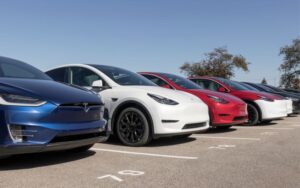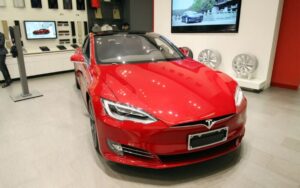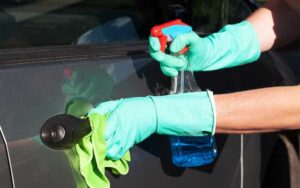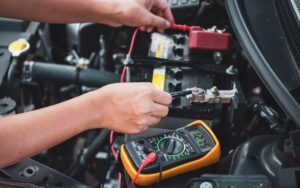5 Most Common Problems With Tesla Autopilot!
Tesla’s Autopilot system has been a game-changer in the automotive industry, with its advanced technology offering drivers a seamless and efficient driving experience.
However, as with any technology, there are bound to be some hiccups along the way.
Tesla’s autopilot systems have recorded many of these, causing users to think twice about its usage.
There are many problems noted with Tesla’s autopilot systems, including software bugs and hardware malfunctions. These problems could become visible as unintended acceleration, difficulty detecting obstacles, phantom braking, limited situational awareness, etc. Some of these problems only require a quick fix, while others may require an extensive check from a professional.
In this blog post, we will take a closer look at the common problems associated with Tesla’s Autopilot system, exploring the challenges and potential solutions.
We will further explore its reliability, the frequency of system failures, and what drivers can do if their Autopilot system fails.
5 Most Common Problems With Tesla Autopilot
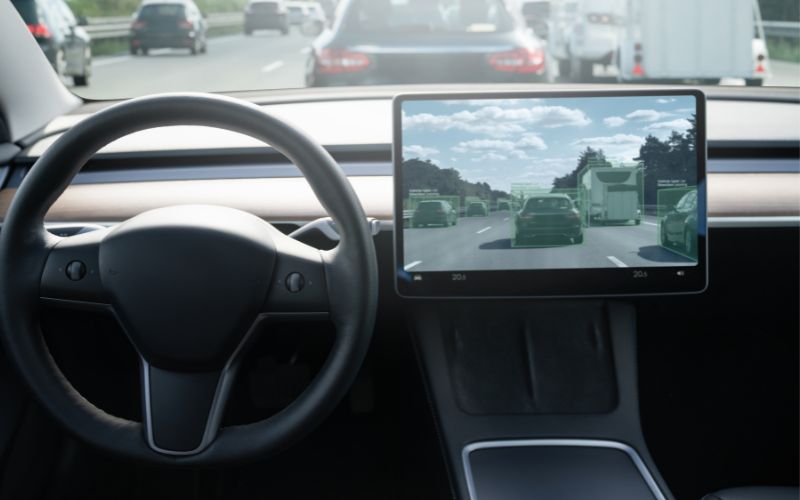
Tesla’s Autopilot system is a widely popular semi-autonomous driving system that has been praised for its ability to make driving easier and safer. Again, it is not without its challenges.
Some of the common challenges are;
#1. Unpredictable Behavior
One of the most common issues with Tesla Autopilot is its unpredictable behavior.
In some cases, the system can make sudden movements or changes in direction that can startle drivers and potentially lead to accidents.
#2. Poor Performance in Adverse Weather Conditions
Autopilot relies heavily on cameras and sensors to navigate the roads, and these can diminish in heavy rain, snow, or fog.
As a result, the system may not perform as well in adverse weather conditions.
#3. Difficulty Detecting Obstacles
Tesla’s autopilot system can sometimes have difficulty detecting obstacles on the road, such as construction barriers, parked cars, or other vehicles.
This problem can lead to dangerous situations if the system does not respond appropriately.
#4. Inability to Detect Road Markings
Autopilot relies on road markings to determine its position on the road, but it may struggle to detect faded or poorly-marked roads.
Therefore, the system can become confused and potentially drive off the road.
#5. Unintended Acceleration
Some Tesla drivers have reported instances of unintended acceleration while using Autopilot. These incidents can be dangerous and have led to several accidents.
Other challenges that Tesla Autopilot experiences include:
Misreading traffic signs and signals: Tesla Autopilot has been known to misinterpret traffic signs and signals, leading to potentially dangerous situations.
Overreliance on Autopilot: Drivers sometimes over-rely on the Autopilot system, believing it to be fully autonomous, which can lead to accidents.
Sudden braking: Autopilot has been known to apply sudden braking, causing passengers to jerk forward and potentially causing accidents.
Phantom braking: The system may suddenly apply the brakes for no apparent reason, causing confusion and potentially causing accidents.
Difficulty in low visibility conditions: Autopilot may struggle to operate effectively in low visibility conditions, such as heavy rain or fog.
Limited situational awareness: Autopilot may not always be aware of its surroundings, which can lead to accidents.
Poor lane detection: Autopilot can struggle to accurately detect lane markings, which can lead to swerving and potential accidents.
Inconsistent performance: Autopilot’s performance can be inconsistent, leading to unpredictable behavior on the road.
System glitches and bugs: Autopilot may experience glitches and bugs, leading to incorrect or dangerous behavior.
Lack of training and education: Drivers may not receive adequate training and education on how to use Autopilot safely and effectively, leading to accidents.
Below is a table classifying Autopilot problems based on the root cause.
| Mechanical Issues | Human Error |
|---|---|
| Software issues | Overreliance on the system |
| Poor lane and traffic detention | Poor knowledge of the system |
| Sudden and phantom braking |
Is Tesla Autopilot Reliable?
Yes, Tesla autopilot is reliable. However, the reliability of the Tesla Autopilot is a topic of much discussion and debate.
Tesla claims that Autopilot is a safe and reliable system that has undergone extensive testing and refinement.
The company also points to data that shows cars equipped with Autopilot have a lower accident rate than those without it.
However, there have also been several reports of accidents and incidents involving Autopilot.
While some causes of these incidents may be driver error or other factors, others appear to be directly related to issues with the Autopilot system.
However, Autopilot is still a relatively new technology, and Tesla is continually working to improve and refine the system.
As such, it is possible that some of the problems with Autopilot will undergo proper consideration in future updates.
How Frequently Do Teslas Autopilot Systems Fail?
There is currently no publicly-available data on the frequency of Tesla Autopilot system failures.
However, there have been several reports of incidents involving Autopilot, including accidents, near-misses, and other issues.
Between the period of July 2021 to November 2022, there have been about 516 crashes from Tesla autopilot.
The Tesla Autopilot system is an advanced driver assistance system (ADAS) designed to assist drivers with tasks such as steering, accelerating, and braking.
While the system has been praised for its advanced technology, there have been reports of accidents involving Tesla vehicles in Autopilot mode.
It’s important to note that Tesla’s Autopilot system is not fully autonomous and requires the driver’s attention at all times.
Tesla’s website warns, “Autopilot design is such that its use is with a fully attentive driver, who has their hands on the wheel and is prepared to take over at any time.”
According to Tesla’s quarterly safety report from Q1 2021, with the engagement of autopilot, there was one accident for every 4.19 million miles driven.
In comparison, the National Highway Traffic Safety Administration (NHTSA) reported one accident for every 484,000 miles driven by all vehicles in the United States.
While the numbers suggest that Tesla’s Autopilot system is relatively safe, there have been instances of accidents involving Tesla vehicles in Autopilot mode.
In March 2018, one Model X Tesla crashed into a barrier on a California highway while on Autopilot, resulting in the driver’s death.
On May 2019, a Tesla Model 3 crashed into a truck while on Autopilot in Florida, resulting in the death of the driver.
Tesla has faced criticism for its marketing of the Autopilot system, with some arguing that the name is misleading and gives drivers a false sense of security.
Additionally, some experts have raised concerns about the limitations of the Autopilot system, including its ability to recognize and respond to unexpected events and its reliance on cameras and sensors under certain weather conditions.
While Tesla’s Autopilot system has been involved in a small number of accidents, the data suggests that it is relatively safe when used correctly.
Again, it is important to remember that the system is not fully autonomous and requires the driver’s attention at all times.
As with any advanced technology, there are limitations and risks associated with the Autopilot system, and it’s important for drivers to be aware of these before using it
What Can You Do If Your Tesla Autopilot Fails?
If your Tesla Autopilot system fails, the first thing you should do is take control of the car and bring it to a safe stop.
You should then contact Tesla’s customer support to report the issue and get advice on how to proceed.
Below is a step-by-step guide;
#1. Take Control of the Vehicle
The first and most important thing to do if your Tesla Autopilot fails is to take control of the vehicle.
Tesla’s Autopilot design is such that it provides assistance to the driver, not replace them. Therefore, it’s essential to always be ready to take over the steering wheel if necessary.
If you notice that Autopilot isn’t responding or isn’t working correctly, it’s crucial to take control immediately to avoid any potential accidents.
#2. Engage the Brakes
If Autopilot fails while driving, the first thing you should do is engage the brakes. Braking will help slow down the vehicle and bring it to a stop.
If you’re on the highway, you may need to pull over to the shoulder of the road before coming to a complete stop.
#3. Restart Autopilot
If you’re confident that the issue isn’t due to an external factor, you can try restarting Autopilot.
To do this, you can pull over to the side of the road, put the car in park, and turn the vehicle off.
Wait a few minutes before turning the car back on and restarting Autopilot. If the issue persists, it’s essential to take control of the vehicle and contact Tesla for assistance.
#4. Contact Tesla for Assistance
If you’re unable to resolve the issue on your own, it’s essential to contact Tesla for assistance.
Tesla’s support team is available 24/7 to help with any issues you may be experiencing. You can contact Tesla by phone, email, or through the Tesla mobile app.
#5. Report the Issue to Tesla
If you experience a problem with Autopilot, it’s essential to report the issue to Tesla. This will help Tesla identify and address any potential issues with the system.
To report the issue, you can contact Tesla’s customer service team and provide them with a detailed description of the problem.
This information can help Tesla improve Autopilot and prevent future issues.
In some cases, Tesla may be able to remotely diagnose and fix the problem with your Autopilot system.
However, if the issue is more serious, you may need to bring your car to a Tesla service center for repairs.
It’s important to note that Tesla’s warranty does not cover damage or issues caused by accidents or misuse of the car.
As such, if your Autopilot system fails due to an accident or other non-warranty issue, you may be responsible for any repairs or replacement costs.

Hey, I’m Michael Davis, a 35-year-old with a degree and a love for cars and tech. Since I was a kid, cars have been my thing—so much that I even thought they ran on magic beans! Fast forward, and I’ve built Vehicle Army, your one-stop-shop for easy-to-understand car facts.

